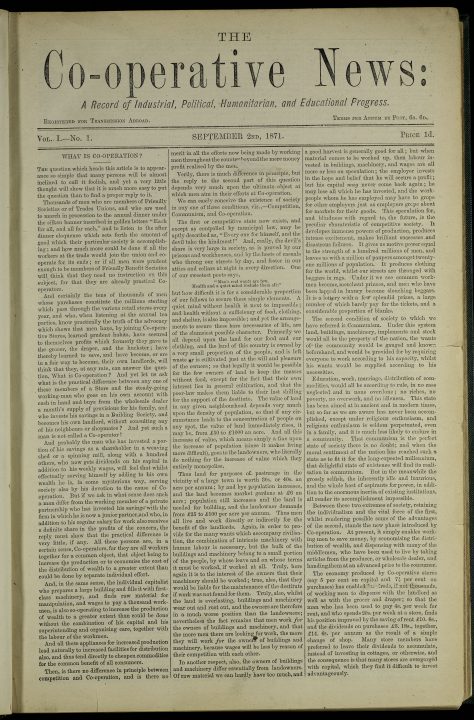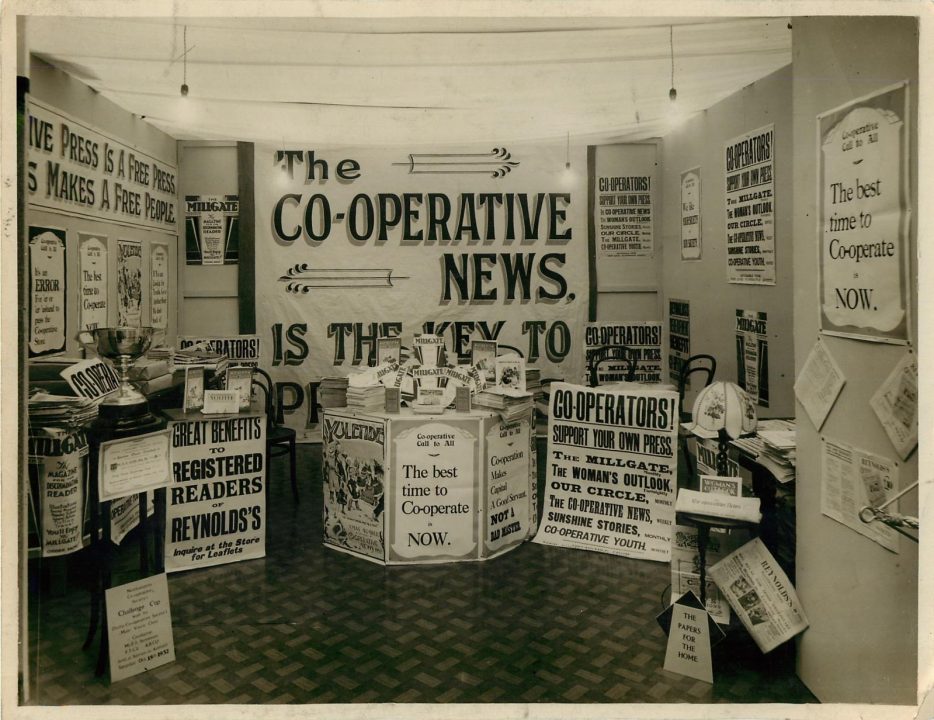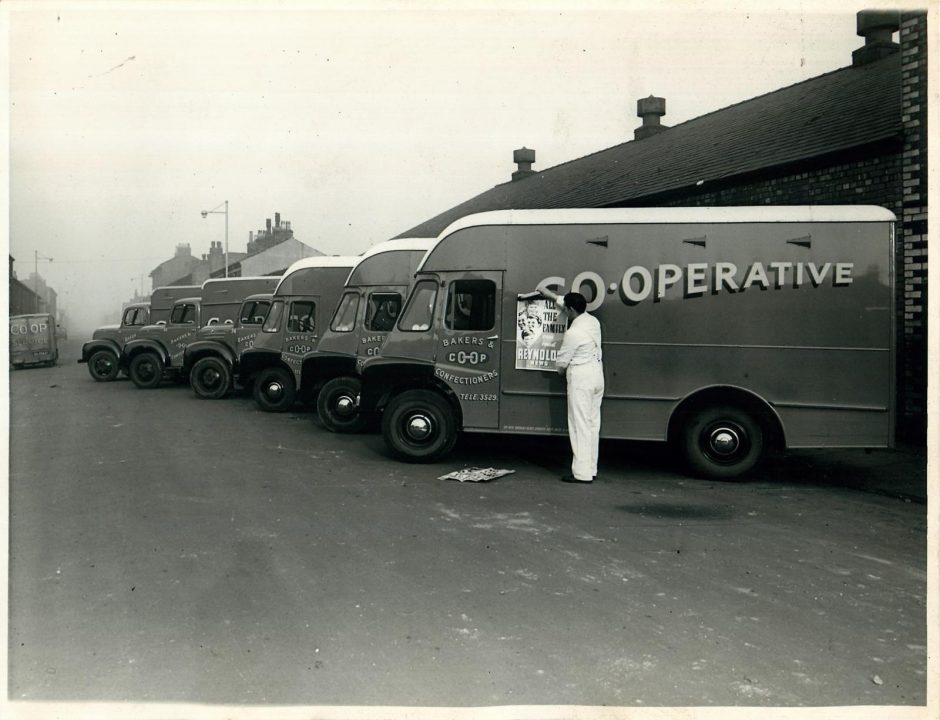
On 2 September 1871, the first issue of The Co-operative News was published, as “A Record of Industrial, Political, Humanitarian, and Educational Progress”.
“What is Co-operation?” its opening lines asked. “The question which heads this article is to appearance so simple that many persons will be almost inclined to call it foolish, and yet a very little thought will show that it is much more easy to put the question than to find a proper reply to it…”
The publication was a long time coming and was preceded by journals such as The Co-operator (founded by the Manchester and Salford Society in 1860. This was taken over by journalist Henry Pitman who shouldered the paper’s full financial burden and indulged his passionate opposition to Dr Edward Jenner’s anti-smallpox vaccination programme, to the extent of renaming the publication ‘The Co-operator and Anti-Vaccinationist’ and a growing clamour for the co-op movement to produce its own weekly newspaper.

A ‘special conference’ discussed the establishment of a paper for the movement on 5 November 1864, and further conferences were held in 1865, 1867 and 1868 – with vocal debates disputes around such a new publication’s name, audience, and who should control it. But on 10 June, 1871, a meeting of society representatives and individual co-operators resolved that a Co-operative Newspaper Society be set up and a board of directors appointed.
About £400 in capital was promised, mostly by individuals, with a quarter coming from the Co-operative Wholesale Society (CWS). Circulation increased from 7,000 to 15,000 within 18 months – a citation which, according to Co-op Union Librarian and ex-News journalist Roy Garratt, “became a worry to some in the ‘Co-operative Establishment’ who felt the News should be controlled by the Congress Central Board (later the Co-op Union Central Board, later Co-operatives UK) or CWS”.
But the society’s chair, Thomas Hayes, laid the ground rules for the paper’s future development when he told the 1873 Congress in no uncertain terms that “the board of the News believes that its perfect independence should be preserved and that it should be above the suspicion of being controlled by an organisation other than its own.”

Printing of the publication was initially carried out by the North of England Printing Society — established in 1869 at Balloon Street, Manchester, to serve the growing number of retail societies and CWS. By 1919, the Balloon Street registered office of the society had added a Manchester works, a London branch and a Newcastle branch and became known as the Co-operative Printing Society.
The Co-operative Newspaper Society (CNS) bought its own printing machinery in 1887, built new premises at 22 Long Millgate, Manchester in 1895 and launched new publications Millgate Monthly, Our Circle, Women’s Outlook, Co-operative Youth and Sunshine Stories (as well as Reynolds News/Sunday Citizen newspapers) – recognising the importance of engaging with young people and women.

The CNS became the National Co-operative Publishing Society, which in turn was renamed Co-operative Press in 1934, and built up an envied reputation as a printer and publisher to the co-operative, labour and trade union movements. The Co-operative Press became the country’s largest trade union printers, and broadened the base of the Co-operative Press outside the movement was effected through two companies – Trafford Press Limited and Trafford Advertising Limited – but the increasing costs and technological changed led to the decision to exit the printing sector in 1999, sell off the society’s remaining Old Trafford print works (having previously divested its Birmingham and Newcastle premises), and move the head office to Holyoake House, a stone’s throw from its original base in Balloon Street, and current home to offices for a family of co-ops including Co-operatives UK, the Co-operative College, the Co-operative Heritage Trust, the Association of British Credit Unions, the Phone Co-op and Third Sector Accountancy.
Co-operative News has had just 15 editors in its 150-year existence including a father and son who held the post for 46 of the publication’s first 50 years – and just two women, Lily Howe and myself. They are: R Bailey Walker(1871); John Collier Farn (1871-1875); Samuel Bamford (1875-1898); William Bamford (1898-1921); James A Flanagan (1921-1937); William Richardson (later Sir William, 1937-1942); Fred Tootill (1942-1955); David Boydell (1955); Frank Bruckshaw ( 1955-1972); Lily Howe (1972-1984); David Short (1984-1986); Geoff Whiteley (1984-1999); David Bowman (1999-2012); Anthony Murray (2012-2018); and Rebecca Harvey (2018- present).

Between us we have witnessed huge changes within the co-operative movement, both in the UK and internationally, as well as wider changes in technology, communication and the role of the media. As society and co-operatives have evolved, so too has Co-op News, in scale, scope and in its fundamental role of connecting co-operatives, championing their successes and challenging their misdemeanors. We have a growing number of organisational and individual members around the world. We are adapting and developing while staying respectful of our – and the movement’s past.
Thank you for coming on this journey with us. We are looking forward to seeing where we go next.